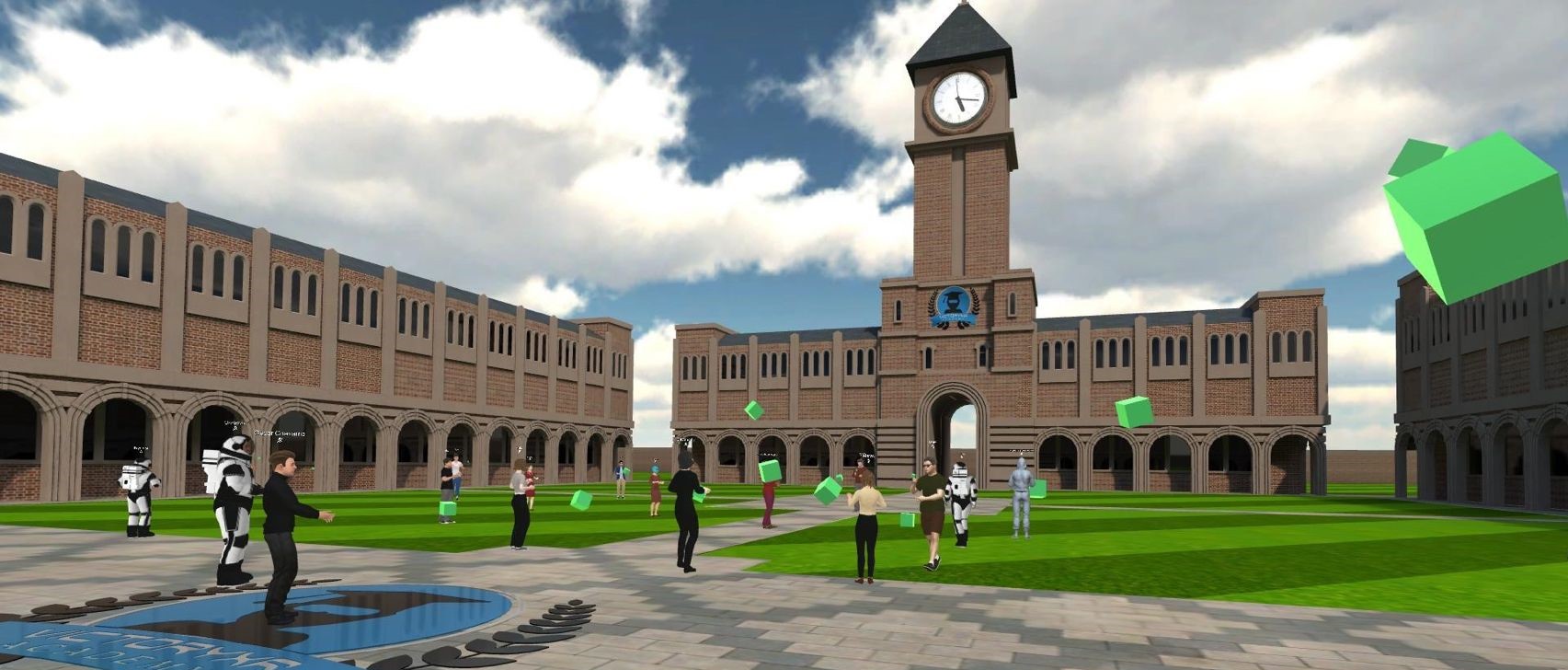MetaCenter
Welcome to the MetaCenter!
Utilizing the latest virtual reality technology, the MetaCenter expands CSULB's research, teaching and problem-solving into the Metaverse. Based out of the College of Engineering, the center offers the ability to access dynamic immersive environments for a wide range of applications.
Whether its the latest research in haptic feedback sensors or captivating young students, virtual and augmented reality have nearly endless potential. At the MetaCenter we champion its use, applying it to our own research, classrooms and lives, and we invite you to work with us to do the same.
We are glad to work with the Gerald M. Kline Innovation Space, VictoryXR and more, and we hope you'll join us.
To support us, please email: coe-metacenter@csulb.edu
Integrating Virtual Environments with Cyber-Physical Systems for Robotic Rehabilitation and Human Performance Improvement
Locomotion is a fundamental human skill. Real-time sensing and feedback is a promising strategy for motion training to reconstruct healthy locomotion patterns lost due to aging or disease, and to prevent injuries. In this research, we explore human locomotion training via biomechanical modeling and a wearable haptic feedback system. In addition, a novel simulation framework for motion tracking and analysis is introduced. This unified framework, implemented within the Unity environment, is used to analyze subject’s baseline and performance characteristics, and to provide real-time haptic feedback during locomotion. The framework incorporates accurate musculoskeletal models derived from OpenSim, closed-form calculations of muscle routing kinematics and kinematic Jacobian matrices, dynamic performance metrics (i.e., muscular effort), human motion reconstruction via inertial measurement unit (IMU) sensors, and real-time visualization of the motion and its dynamics.
A Virtual Reality Environment with Haptic Feedback for Psychological Rehabilitation for Soccer Athletes
This research focuses on a virtual reality solution to identify possible factors that would impact self-efficacy beliefs of soccer athletes recovering from lower extremity injury while engaging in dynamic tasks within a soccer-specific virtual environment. The Psychological Response to Sport Injury Inventory measurement and brief interviews will be used after each virtual reality exposure. The virtual reality simulation will consist of three major components: virtual reality environment, motion capture of the subject, and haptic feedback. The virtual reality environment consists of three levels that vary in complexity and degree of the subject's interaction. Levels one and two will be set in a virtual physical therapy room where the subject will be introduced to virtual reality and minor dynamic interactions. Level three will be set in a virtual soccer field and will expose the subject to high dynamic interactions and decision making.
E. Demircan, E. Recinos, J. R. Abella, H-L. Teng, W. Wu, and I-H Khoo.
Understanding Human Perception for the Development of A Portable Vibrotactile Haptic Suit
[Adv. Sci. Technol. Eng. Syst. J., 2020]
E. Demircan, H-L. Teng, E. Recinos, J. R. Abella, I-H Khoo, and W. Wu.
Subject Perceived Haptic Feedback during Different Mode and Number of Motors
International Society of Biomechanics/American Society of Biomechanics [ISB/ASB 2019]
E. Recinos, M. Henry, and E. Demircan
A Virtual Reality Environment with Haptic Feedback for Psychological Rehabilitation for Soccer Athletes
IEEE UR 2019 [paper] & SoCal Robotics Symposium 2019 [poster]
J. R. Abella and E. Demircan
A Multi-body Simulation Framework for Live Motion Tracking and Analysis within the Unity Environment
IEEE UR 2019 [paper] & SoCal Robotics Symposium 2019 [poster]
We are excited to reach out to the community and provide people of all ages and backgrounds with the opportunity to discover the potential of virtual environments to improve our lives and inspire interest in science, technology, engineering, and math (STEM) topics. We believe that everyone, from young elementary school students to young-at-heart seniors, can learn something new from the unique study of dynamic immersive environments. Potential users of our technology, including patients with musculoskeletal disorders, professional athletes seeking to improve performance, and clinicians can especially benefit from learning about this work. In addition, we particularly encourage participation of underrepresented groups in engineering, and want to show young girls that their involvement in science, technology, and engineering can improve our world.
Please contact us if you are interested in having an event with us.






